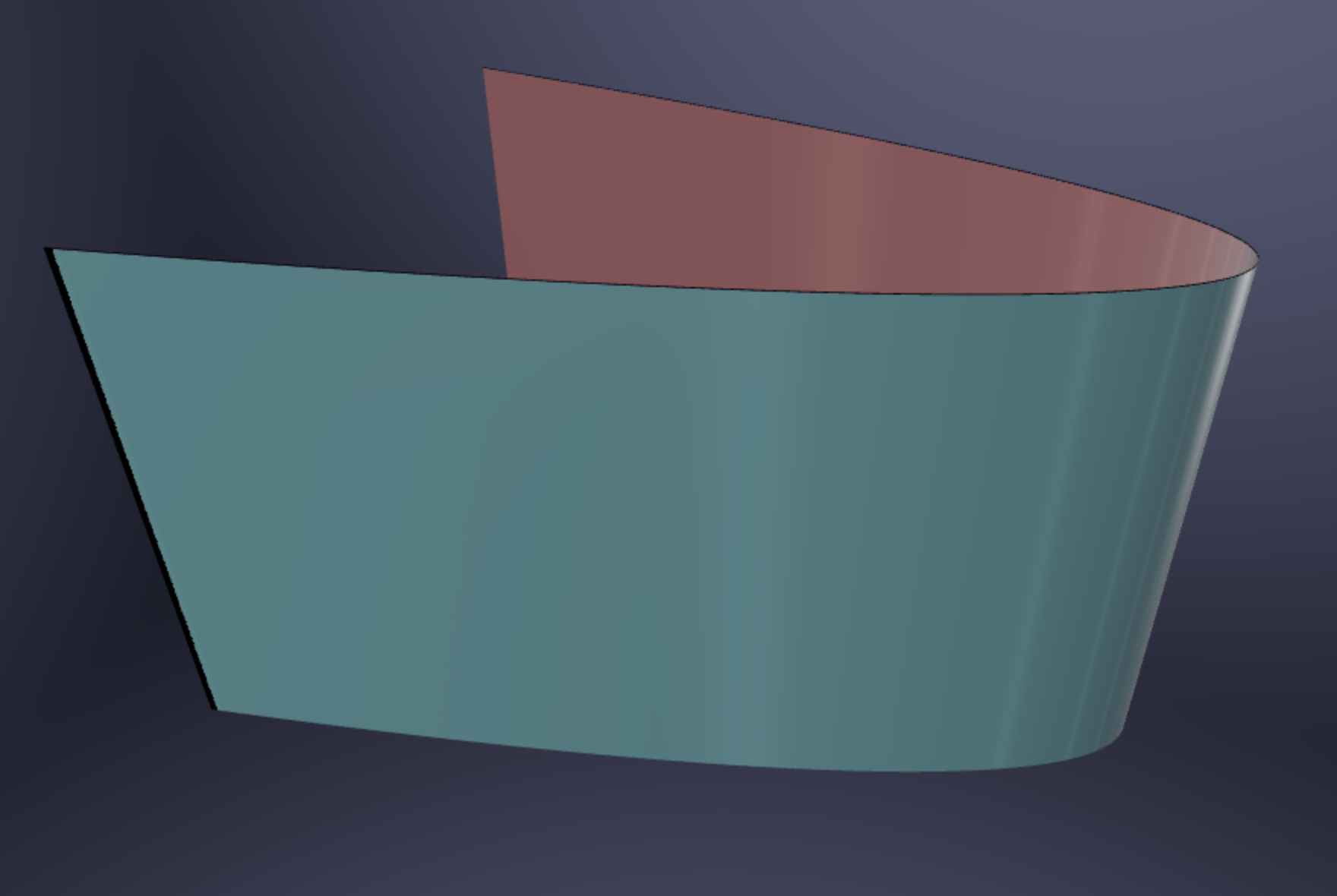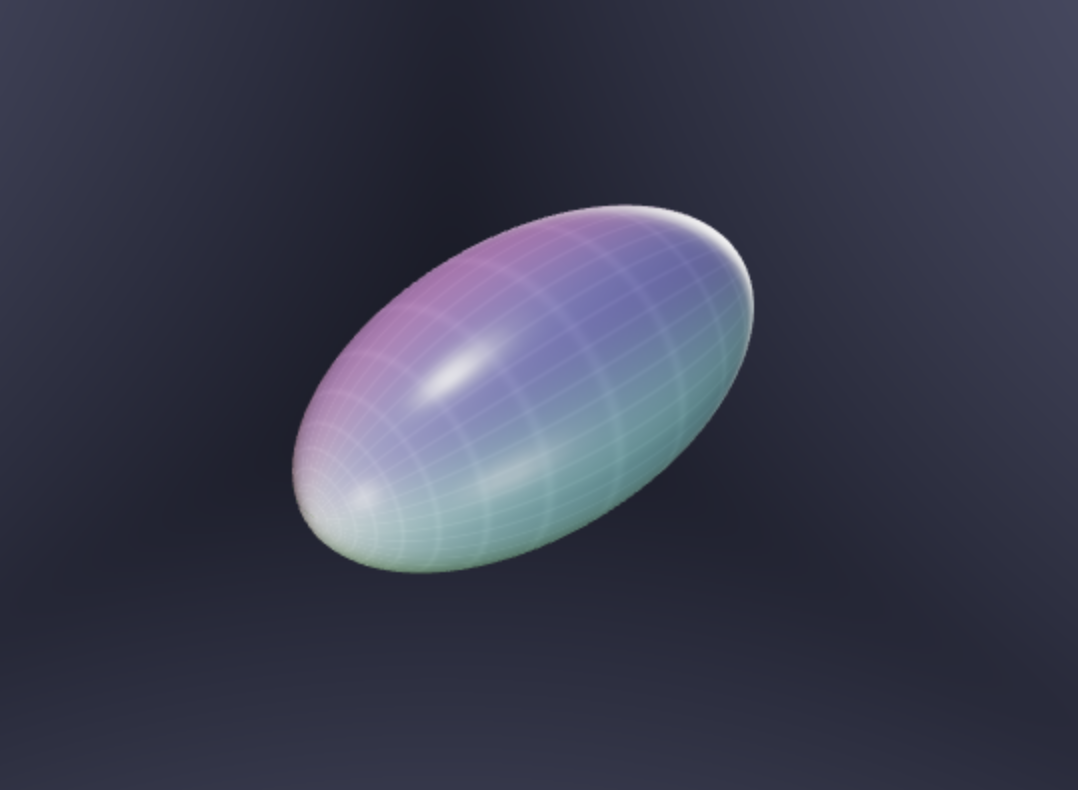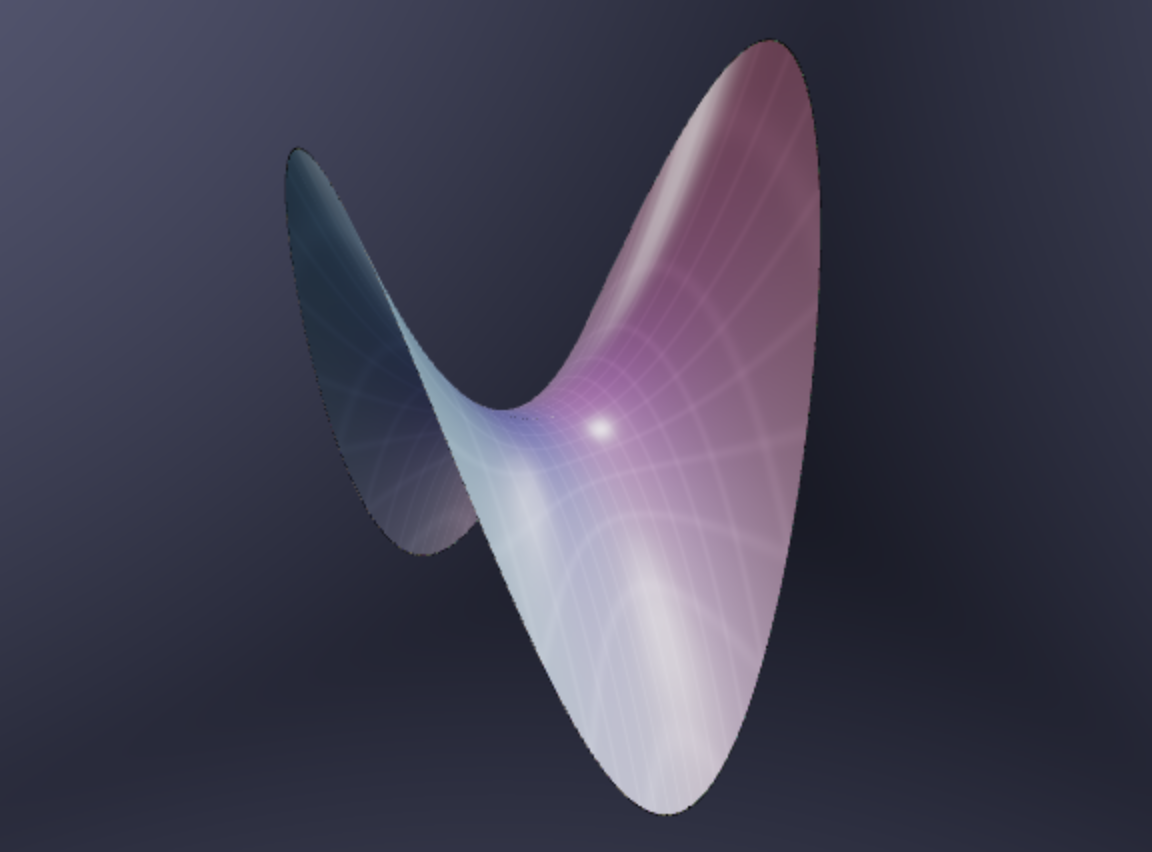4 Shapes
(Relevant Sections of the Textbook: 12.5 Lines & Planes, and 12.6 Cylinders and Quadric Surfaces)
Lines and planes are given by linear equations: involving only the coordinate variables (
4.1 Lines
Definition 4.1 (Implicit Lines in
Theorem 4.1 (Normal Direction to a Line) The implicit line
How can we confirm this? Find two points along the line, subtract them to get their direction vector, then take the dot product of this with
Finding the direction of a line by finding two points on it is tedious, so luckily once we know the above fact we don’t need to do this any more! Its easy to figure out the drection of an implicit line: if its orthogonal to
Definition 4.2 (Parametric Lines) A parametric line is a function of the form
Theorem 4.2 (Line Segment Between Two Points) If
4.2 Planes
Definition 4.3 (Implicit Planes I) A plane through the point
Distributing and collecting all the constants on the right hand side, we see planes are given by simple, linear equations in three variables.
Definition 4.4 (Implicit Planes II) A plane in
The original derivation also allows us to easily read off the normal vector to a plane:
Theorem 4.3 (Normal Direction to a Plane) The implicit plane
To write down a parametric line, we chose a point
Definition 4.5 (Parametric Planes) A parametric plane through the point
What is the normal vector to a parametric plane? We know two vectors on the plane
Theorem 4.4 (Normal to a Parametric Plane) If
Exercise 4.1 (Implicit Equation from a Parametric Plane) Consider the following parametric plane:
What is a point that it passes through? What is its normal vector? What’s an implicit equation for this plane?
4.3 Circles and Spheres
Definition 4.6 (Circle) The circle
We can use the distance function on the plane to come up with an implicit formula for the circle:
Theorem 4.5 (Implicit Circle in
Can we also find a parametric description of the circle? Using the trigonometric identity
Theorem 4.6 (Parametric Unit Circle$) The unit circle centered at
Translating and scaling this:
Theorem 4.7 (Parametric Circle in
Definition 4.7 (Sphere) The sphere
Theorem 4.8 (Implicit Sphere in
It is also possible to make a parametric equation of a sphere. Since the surface of a sphere is two dimensional we will need two parameters much like we did for planes. The expression looks a bit complicated the first time you see it, and while we will not need it until later in the course, it appears below for completeness.
Theorem 4.9 (Parametric Unit Sphere) The sphere of radius
Below is a program illustrating the parameric unit sphere: the rectangle on the bottom is the space of parameters (the
Try going into the menu and messing with the sliders under domain, to see what the two different angles do.
Just as for the circle, we can take this parameterization for the unit sphere and use it to find one for any sphere by scaling and translating it:
Theorem 4.10 (Parametric Sphere) The sphere of radius
4.4 Other Shapes
The equation
Example 4.1 (Cylinder) A cylinder is a set of points in
The easiest examples are cylinders around coordinate axes: For example,
Similarly,

In general, the implicit equation of any 2-d shape can be used in 3 dimensions to describe a “stack” of those two dimensional shapes along the direction of the variable that’s missing from the formula.
Example 4.2 The equation

Other shapes that will be useful are ellipsoids, which are squashed spheres:
Example 4.3 (Ellipsoid) An ellipsoid is given by the implicit equation

Example 4.4 (Paraboloid) A paraboloid is the surface

Example 4.5 (Saddle) A saddle shaped surface, or hyperbolic paraboloid is a surface of the form

4.4.1 Helpful Videos
A discussion of implicit vs parametric equations (the Calculus Blue series)
Here’s some videos reviewing some of the techniques we learned in class: first, a couple involving planes.
And secondly, a review of precalculus material on putting circle euqations into standard form.
Examples of quadratic surfaces